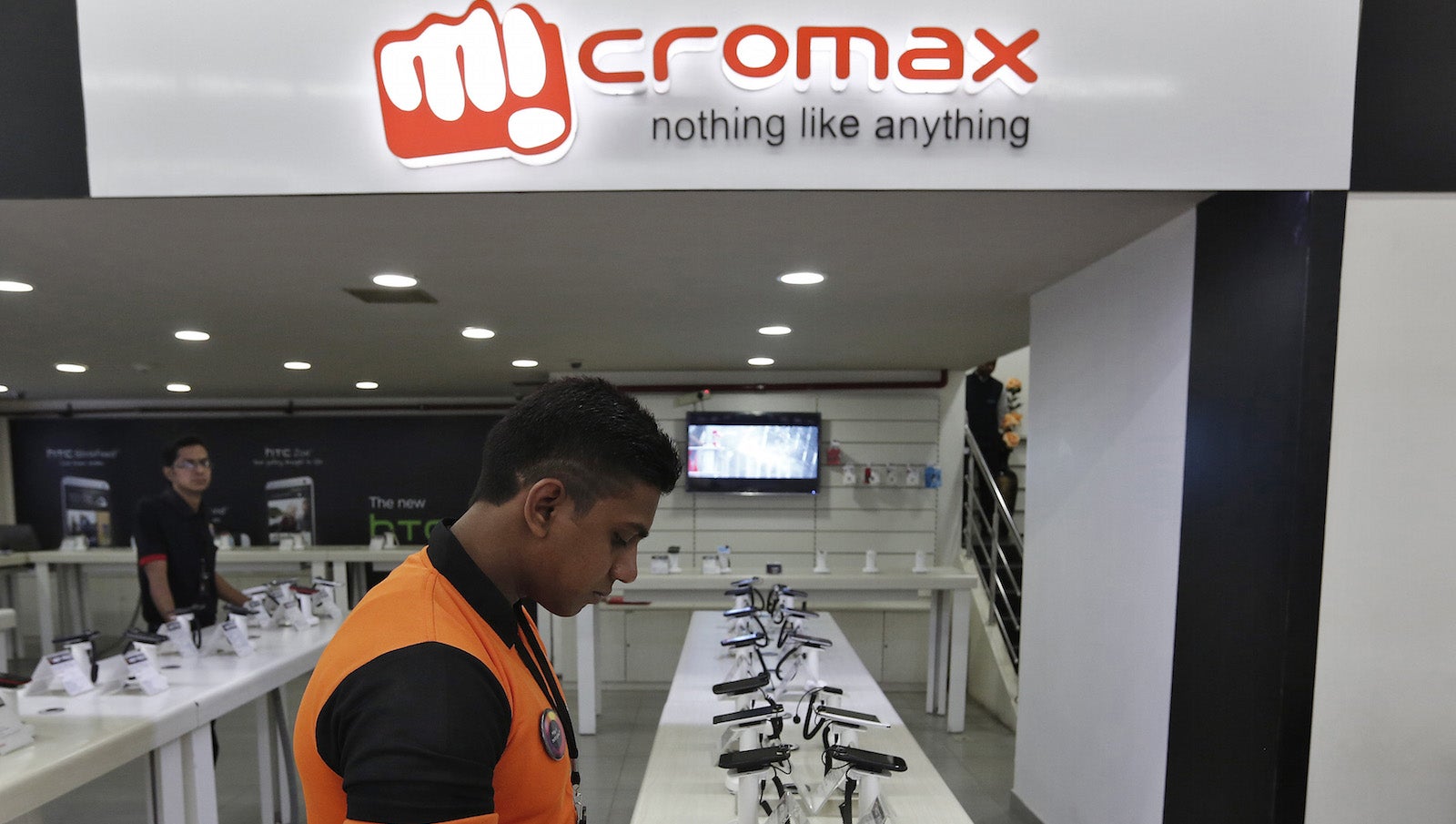Can those little shampoo packets help Micromax become one of the world’s top five phone makers?
This post has been corrected.


This post has been corrected.
Micromax, India’s homegrown upstart, has announced its ambition: It wants to be one of the top five phone makers globally.
And it wants to achieve this mean feat in just two years.
To reach to the top, Micromax has conjured up a two-pronged approach—targeting the mass market with cheap phones and taking on the more discerning users with its online-only brand.
“We have covered the offline distribution in a fantastic way. To compete in the online space we have created YU, which is an online-only brand. So, in total, we are covering the massive portion of the market,” Rahul Sharma, co-founder of Gurgaon-based Micromax, told Founding Fuel, a website on entrepreneurship, in a podcast.
Phone in a sachet
To capture a bigger slice of the mass-market segment, Micromax launched “sachet” phone last month. The barebones Micromax Joy comes packed in a sachet, and is priced at between Rs699 ($11.2) and Rs749 ($12.2).
The use of a sachet to sell mobile phones is to “massify” the product Sharma explained, not unlike how India’s consumer goods companies sell shampoos and detergents in small, cheap packets to attract more cost-conscious buyers.
“When I showed the concept to some distributors, they said it won’t work because it is just a phone inside a sachet pack,” said Sharma. “I told them that this is going to work. There is a massive demand for the product, and in 30 days we are out of stock”.
By all accounts, Sharma has a keen sense of what consumers want—and he makes an effort to stay on top of the game. Once a month, the co-founder of Micromax works the shop floor, he said, and actually sells phones, even those of other brands.
“That helps me to understand and learn about the consumers and what exactly are they asking for,” he explained, “Once you know the pulse, that helps you to innovate.”
Tackling Xiaomi
A bigger question for Micromax is how to take on the online phone market, where its biggest threat is Xiaomi.
The Chinese phone maker began selling its phones in India in July 2013—and had sold one million smartphones in the country, as of December. Micromax will take on Xiaomi with its new online-only phones —YU— which have customised user interface.
In January, the company launched the YU brand of phones under YU Televentures, a 100% subsidiary. Micromax has partnered with Cyanogen, an open-source operating system on the Android platform.
“It would have taken us two to three years to build it (a system) ourselves, so we partnered with Cyanogen and the result is in front of you—people are loving the devices we rolled out,” he said.
In January, the Rs8,999 ($144) phone received 300,000 registrations for just 10,000 handsets on offer when it was on sale on Amazon.
The result of Micromax’s two-pronged strategy has seemingly led to an increase in market share. In February, technology consultancy Canalys estimated that Micromax has outsold Samsung to become India’s number one smartphone company.
“We are ready to take those battles,” he said. ”We are very well poised, well positioned in terms of working on an online model as well as an offline model.”
Correction: A previous version of this post incorrectly stated that Xiaomi had used the Cyanogen platform. According to the company, it has never used CyanogenMod in its devices.